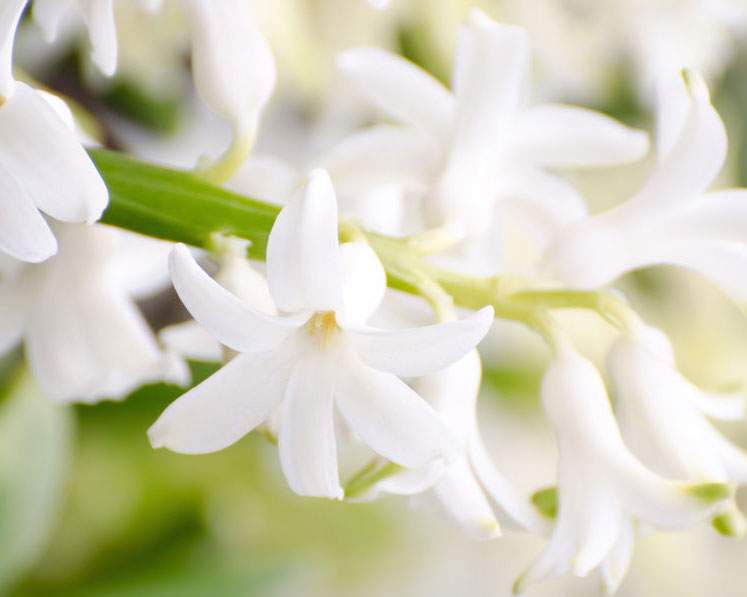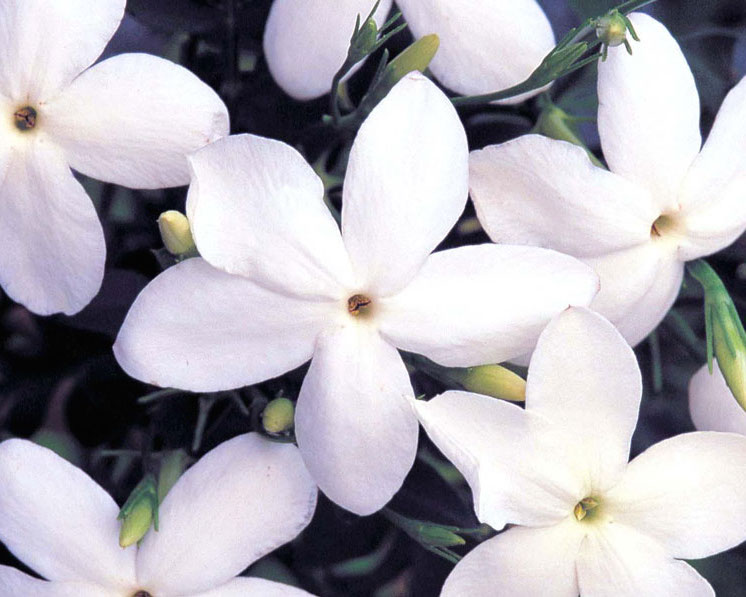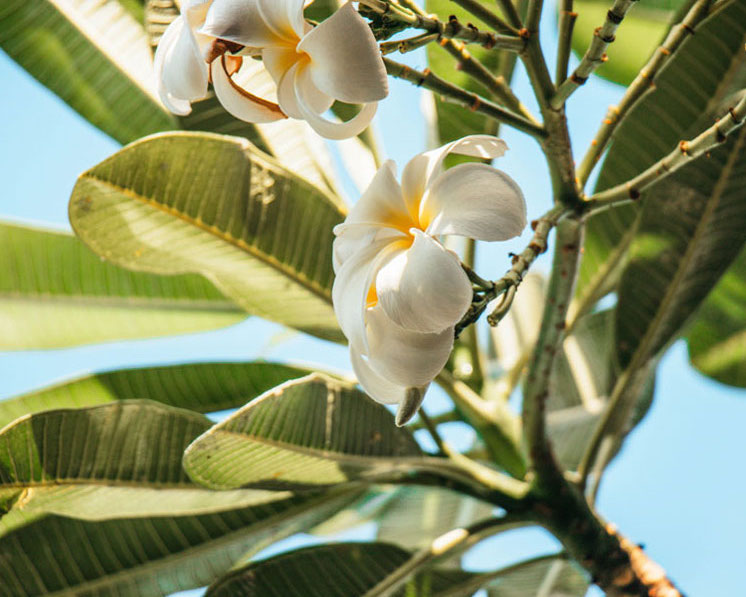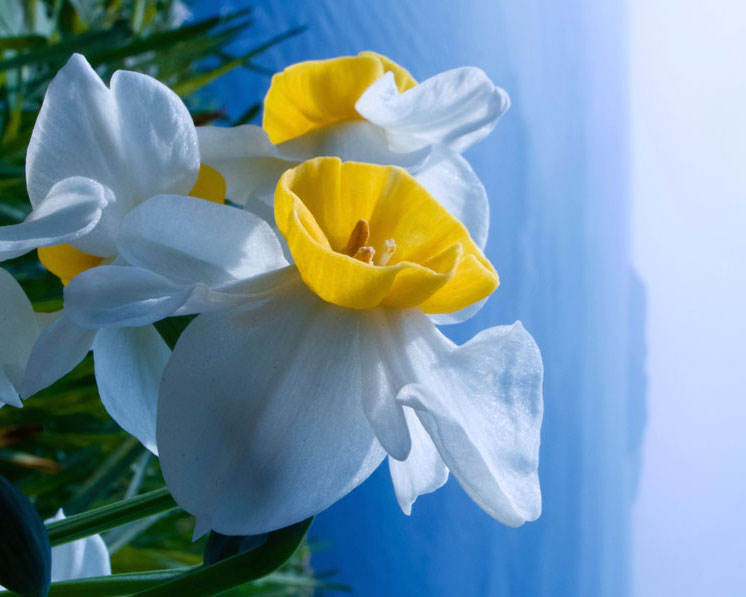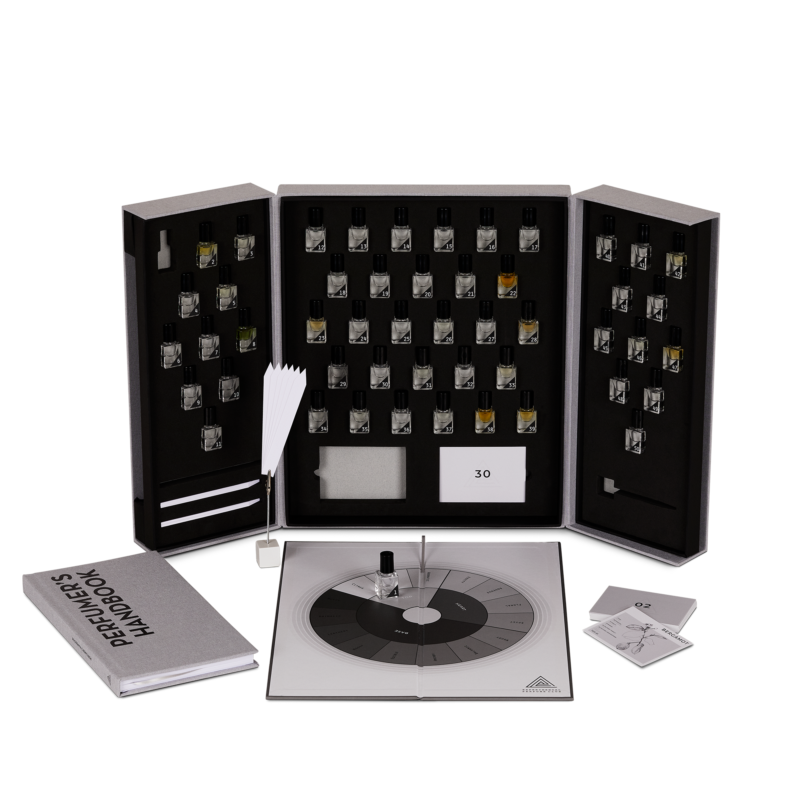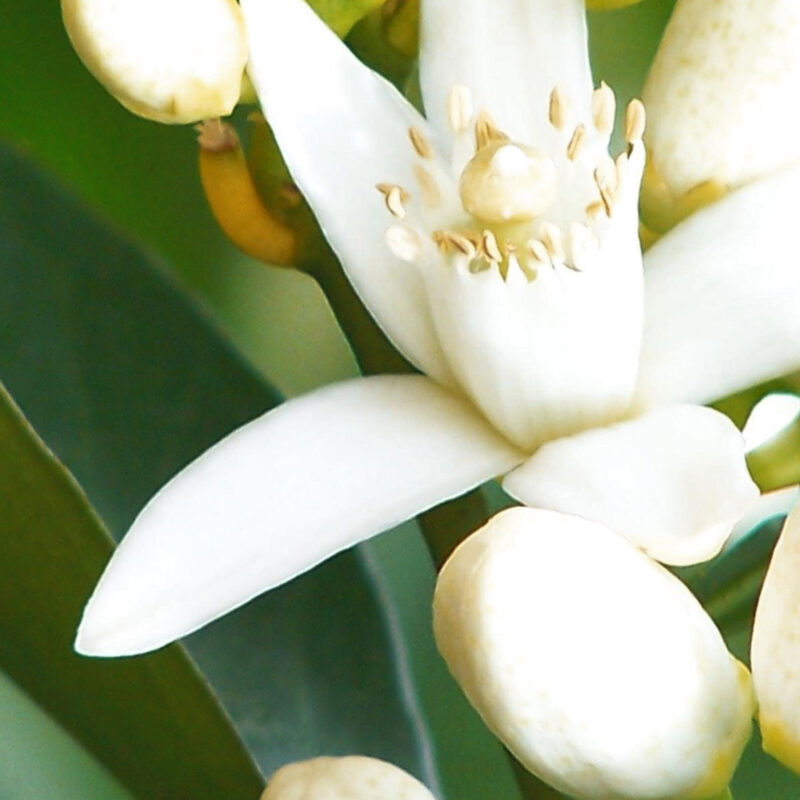White flowers are some of the most beautiful flowers. Their heady, exotic, spicy and sweet scent fills a room in no time. How are these ingredients used in perfumery? In this post, we will explore five of the most fragrant flowers used in perfumery.
Jasmine
The word ‘jasmine’ comes from the Persian word ‘Yasmine’ meaning ‘fragrance’. There are over 200 species of jasmine but only two are used in perfumery. These are Jasmine sambac (native to China and India but now mainly grown in India) and Jasmine grandiflorum (native to Afghanistan and Iran but now commonly grown in France).
Jasmine in Perfumery
Jasmine has long been known as the king of flowers with rose being the queen. The scent of jasmine is best described as heady, spicy, slightly sweet and fruity and of course, beautifully animalic. The animalic facet is one of the reasons the smell of white flowers is addictive to some and revolting to others.
Like most florals in perfumery, the absolute of the flowers is obtained via solvent extraction for use in perfumery. Jasmine absolute is a viscous brown or yellow liquid. It takes around 750 kg of flowers to obtain just 1 kg of absolute extract making it one of the most expensive raw materials in perfumery. For this reason, the scent of jasmine is often recreated synthetically. There is so much that can be said about jasmine absolute which would take up an entire blog post in itself.
Watch the jasmine harvest at Firmenich
Back in Victorian England, young girls were forbidden to be in contact with these flowers or to visit tuberose gardens in the evenings for fear they would be seduced by the scent of these flowers.
Tuberose
Tuberose is one of the most powerful floral scent in perfumery. The smell is reminiscent of gardenia, but is more carnal and voluptuous with stronger earthy facets. A well-trained nose would be able to detect the metallic and buttery hints of this ingredient. Beware: this flower does not always smell so lovely! When the petals begin to brown, the scent of rot emerges, so if you’re looking to keep some at home, make sure it is in bloom.
Tuberose are night-bloomers and have been nicknamed ‘Queen of the Night’. Back in Victorian England, young girls were forbidden to be in contact with these flowers or to visit tuberose gardens in the evenings for fear they would be seduced by the scent of these flowers.
Tuberose in Perfumery
Tuberose absolute is a heady, spicy, creamy and exotic floral ingredient. It is one of the most expensive raw materials in perfumery. This is due to the large volume of flowers (approximately 3600 kg) needed to extract the tiniest amount (0.5 kg) of absolute. The natural extract of tuberose would only be used in the tiniest amount. Chances are the tuberose scents you have encountered are actually reconstitutions.
Ylang Ylang
Though not white in colour, ylang ylang is a wonderful flower that shares the common characteristics of white flower scents: heady and spicy with fruity, exotic and sweet facets. Ylang ylang is also referred as the “jasmine of the poor“. It originates from South East Asia and can now be found in Africa, the Caribbean and the Americas. Ylang ylang can grow on a tree or as a vine, with both developing large, long yellow or green flowers. They are picked when they are most fragrant and when they develop a small reddish tint.
Ylang Ylang in Perfumery
Ylang ylang oil is found in several forms: the ‘extra’ and ‘first’ extracts are the most refined, the ‘second / II’ and ‘third / III” extracts are less so. Only 400 kg of flowers is needed to produce 1 kg of oil making it one of the most affordable naturally extracted white flower raw material.
The true nature of ylang ylang is difficult to recreate synthetically, even with the best extracts and molecules. Similar ingredients used to recreate the smell of jasmine can be used in ylang ylang accords. The incorporation of salicylates (benzyl, hexyl and methyl) in these accords is important as these molecules bring the unique “solar” and exotic notes of ylang ylang. Thanks to their soft and mild balsamic scent, salicylates also add a creamy effect to the accord.
Frangipani
Frangipani (Plumeria) flowers grow on trees as white, yellow or pink flowers. Their scent is often reminiscent of something exotic, tropical and sultry. This is unsurprising given that these flowers are native to tropical regions of South East Asia, the Caribbean and Brazil. Like jasmine and tuberose, these flowers are most fragrant at night. This is mainly to con pollinators into pollinating them as these flowers do not produce any nectar.
Frangipani in Perfumery
The scent of frangipani is best described as exotic, tropical, heady, ‘solar’ (sun-kissed), lactonic, jasmine and tuberose-like, and sweet; with notes of apricot, peach and hints of lemon. The reconstitution is most often used in perfumery using blends of lactonic fruity notes, such as coconut; ‘solar’ notes, such as salicylates, and white flower notes. These flowers are usually solvent extracted to obtain the absolutes as with most white flowers.
The term ‘frangipani’ actually comes from the name of a perfume created by a 16th century Italian master glover-perfumer. The perfume was created with a mix of orris, spices, civet and musk – no actual Plumeria flowers – and mixed in wine to be used on scented gloves, known as ‘Frangipani Gloves’. The Plumeria flowers were named frangipani after a French colonist happened upon them in the West Indies and noted that the scent of the flowers were reminiscent of the Frangipani Gloves.
Narcissus
Narcissus flowers are probably one of the only wildflowers that are currently used in commercial fragrances. This wildflower is native to meadows and woods across southern Europe and north Africa. It is also widely grown across Asia and the Middle East.
The exact origin of the term narcissus is not well known but is often linked to the Greek word ‘narke’ meaning narcotic – a term well suited to the scent of these flowers. It is also frequently linked to the Greek myth of Narcissus – a handsome youth who fell in love with his own reflection upon seeing it in a pool, fell in and drowned. The plant of his namesake is believed to grown in the place where he died.
Narcissus in Perfumery
Like its other white flower counterparts, the scent of narcissus is rich, heady, spicy and animalic. What sets it apart is its added green, honey- and hay-like notes. It is also notably sweeter than other white flowers.
This raw material comes at a hefty price tag. It takes nearly 500 kg of flowers to obtain just 1 kg of ‘concrete’ or 300 g of absolute. Narcotic though its scent, perfumers should proceed with caution when using this ingredient, as it is very powerful and just a tiny little touch is required or the scent will overwhelm.
